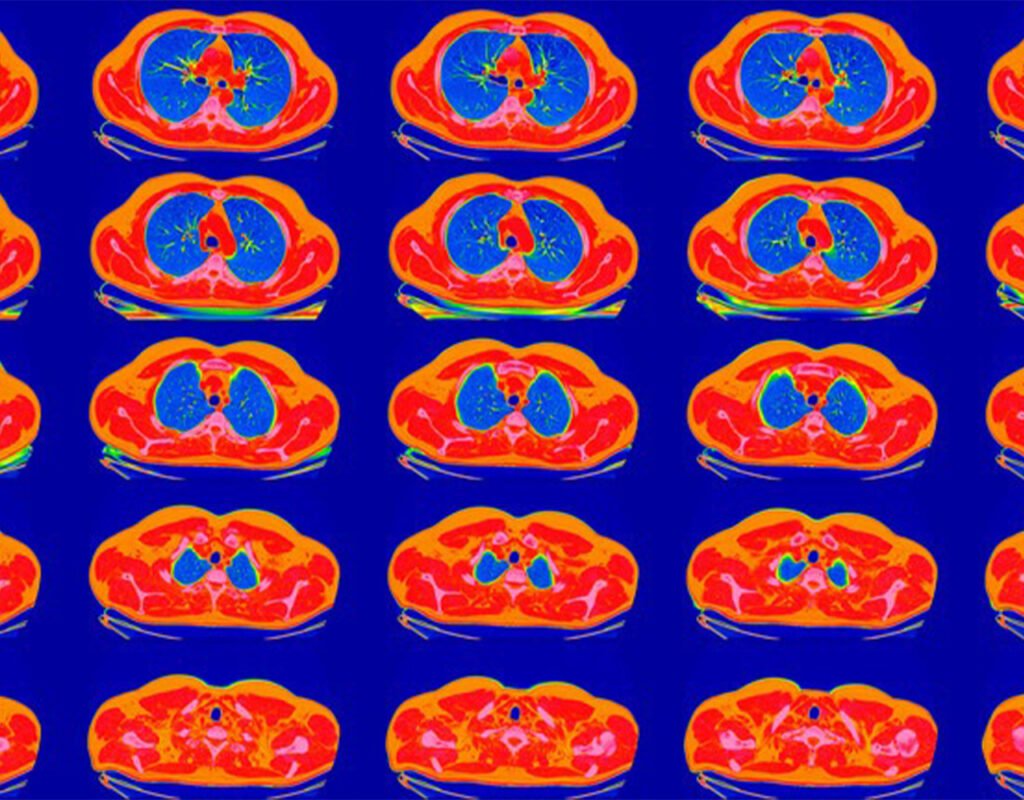Lung cancer claims more lives in the U.S. than any other malignancy. The latest updated guidelines from the American Cancer Society (ACS) aim to reduce the number of deaths by significantly expanding the range of people who undergo annual low-dose CT scans.
Advocates hope the new recommendations will prompt more people at risk for lung cancer to get screened annually, says Carey Thomson, M.D., director of the Multidisciplinary Thoracic Oncology and Lung Cancer Screening Program at Harvard-affiliated Mount Auburn Hospital and chair of the ACS/National Lung Cancer Roundtable Early Detection Task Group. Currently, fewer than one in 10 eligible people in the U.S. get recommended lung screenings.
What are the key changes in the new ACS lung cancer guidelines?
The updated ACS guidelines are aimed at people at high risk, all of whom have a history of smoking. And unlike previous ACS recommendations, it doesn’t matter how long ago a person quit smoking. The updated guidelines also lower the smoking limit and expand the age window for screening, which is consistent with the U.S. Preventive Services Task Force’s 2021 recommendations.
These changes combined could mean an additional six to eight million people will be eligible for screening.

How many people get lung cancer?
Although lung cancer is the third most common cancer in the United States, it is the deadliest, killing more people than colon, breast, prostate and cervical cancer combined. In 2023, about 238,000 Americans will be diagnosed with lung cancer and 127,000 will die from it, the ACS estimates.
What is the main risk factor for lung cancer?
While people who have never smoked can get lung cancer, smoking and secondhand smoke are a major risk factor for the disease. According to the CDC, smoking is linked to up to 80% to 90% of lung cancer deaths.
In fact, smokers have a 15 to 30 times higher risk of developing or dying from lung cancer than nonsmokers. The longer someone smokes and the more cigarettes they smoke daily, the higher their risk.
Is lung cancer easier to treat if it is discovered in its early stages?
Yes. As with many cancers, detecting lung cancer in its early stages is critical to improving survival chances.
Depending on the type of lung cancer diagnosed, up to 80% to 90% of people with a single early-stage tumor that can be surgically removed can survive for five years or longer, according to the American Society of Clinical Oncology. The number of people who survive long-term becomes smaller as tumors grow larger and spread to the lymph nodes or other areas of the body.
Should you consider lung CT screening?
The updated ACS guidelines recommend screening if you:
Are 50 to 80 years old. This age range has been expanded from the ACS’s previous recommended cutoff of 55 to 74.
Are a current or former smoker. This includes anyone who has smoked, not just smokers who quit in the past 15 years.
Smoked 20 or more pack-years. This means having smoked an average of 20 cigarettes a day for 20 years, or 40 cigarettes a day for 10 years. Previously, the minimum requirement was 30 or more pack-years.

“While increasing the number of people screened for lung cancer will discover additional early tumors, it also means more false positives will be detected,” says Howard LeWine, MD, editor in chief of medicine at Harvard Health Publishing. False positives are worrisome spots on a CT scan that are not cancer. But they usually require additional testing, possibly a biopsy and even surgery for something that was harmless.
Before scheduling a lung screening with a low-dose CT, you need to talk to a doctor about the screening process, your risks and whether it will be covered by your health insurance. Previously, an in-person doctor’s appointment was required.
Why did the ACS change the "years since quitting smoking" screening requirement?
Much international research suggests that the number of years since quitting smoking has little or no effect on the risk of developing lung cancer, says Dr. Thomson.
“The likelihood of developing lung cancer is the same whether you quit smoking more than 15 years ago or very recently,” says sie. “The recommendations at the national level say we need to screen more people and make the screening requirements easier. One way to do that is to eliminate the smoking cessation history requirement.”
If you're eligible for screening, how often should you get it done?
Annual, says the ACS.
But why not screen for lung cancer for several years and then take a break, as is done for malignancies like cervical cancer? There’s no research to show that this approach is safe, says Dr. Thomson.
“We know that a large percentage of lung cancers identified in people by low-dose CT scans are detected after the first year of screening,” she says. “And some forms of lung cancer can spread rapidly, which is one of the reasons it’s as deadly as it is.
Have all guideline organizations dropped the requirement for how many years have passed since smoking cessation?
No. The Centers for Medicare & Medicaid Services (CMS) and the U.S. Preventive Services Task Force — which, along with the ACS and other groups, recommend national standards for screening — have not yet adopted the ACS approach. These two groups maintain that only smokers who quit smoking 15 years or less ago should still be eligible for screening.
However, the guidelines issued by the National Comprehensive Cancer Network are consistent with the new ACS recommendations in that they do not provide a threshold for the number of years since smoking cessation.
Because Medicare and other health insurers may have slightly different rules for determining coverage for CT screening for lung cancer, it’s best to check with your doctor or insurer before getting tested.

